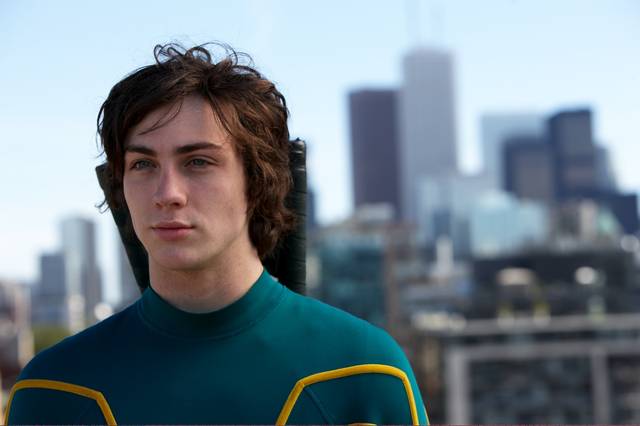 |
An Extreme close up is a shot which focuses on one single part, for example an eye. This would be used to enhance the dramatic expression on someones face.
Close Up
A close up is a shot showing the full face, showing more than an extreme close up. This may be used in a film to show more of the personality/emotion on the characters face. It helps you to know more about the character as well.
Mid Shot
A mid shot is a shot which focuses on the face and shoulders. This may be used to keep the character in the main focus, however trying to bring in more of the surroundings that they're in, making you more aware of the situation.
Long Shot
A long shot is a shot that shows the whole character, from head to foot.This shot may be used to introduce the characters surroundings a lot more and show what they're wearing. This can help to identify the character for example: Someone wearing a sheriffs outfit we would stereo-typically know that he was an important officer and the film was maybe that of a western era. All of this can be told from a long shot and not of say a close up.
Extreme Long Shot
An extreme long shot is a shot which takes into account the full body of the character however shoots them from further away to allow the surroundings to make an appearance This can be used to make the character seem more insignificant in contrast with the surroundings. It lets you focus less on the person and more on what's going on around them.
Tilt shot
A tilt shot is a shot which is taken on the tilt. This can be used to add more interest to the picture/film. It gives the piece a strange feel and keeps interest in the consumer.
High Angle Shot
A high angle shot is taken from a high angle just above head height. This can be used to make the character seem smaller compared to other characters, as well as maybe put more importance into them as it's a single shot focusing on them still.
Low Angle shot
A low angle is shot from below, at for example the feet area. This can be used to make the camera seem bigger and therefore more important, and is in direct contrast with the high angle shot.
Eye level
The eye level shot is a angle that's taken at the characters eyes. This can be used to make the character directly interact with the audience, and draw them into the emotion that they're expressing. It brings all the attention onto the one character and is very effective in movies.
Birds Eye View
This is shot from a birds point of view, so ver high up looking directly down on the person/thing. This makes the character seem insignificant in comparison to the surroundings as they're portrayed as so tiny.
Worms Eye View
This shot is taken from down below, with the camera on the ground so you can get the lowest shot possible. This in effect can be used to make the character to seem bigger than they actually are which enhances their importance as well as making them seem more intimidating due to their size.
Over The Shoulder Shot
This shot is taken from behind a characters shoulder, to show yet another character. This is used to draw attention (using the picture as an example) the baby, making them the center of our attention, however the shot also allows us to remember there's another character there too.











No comments:
Post a Comment